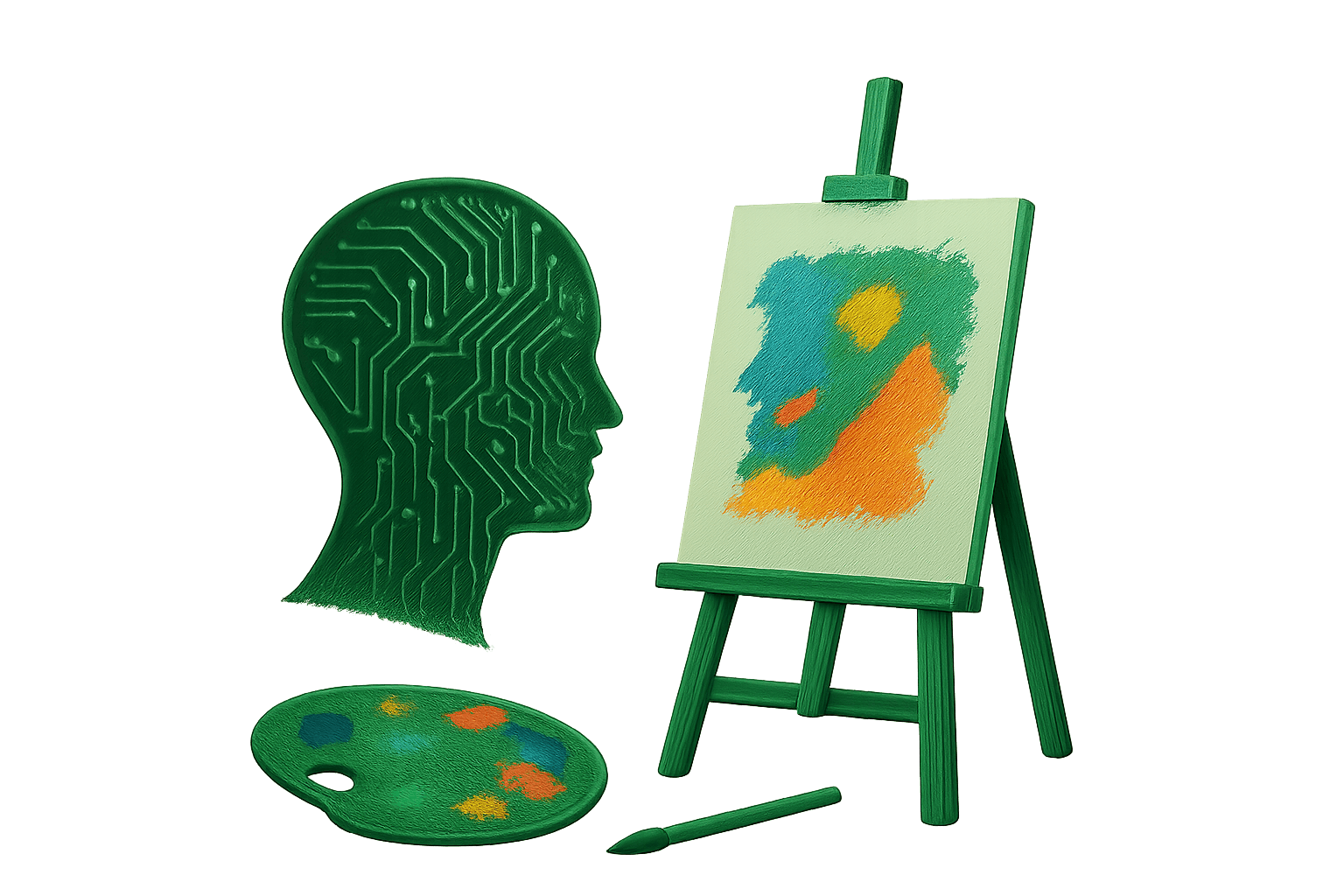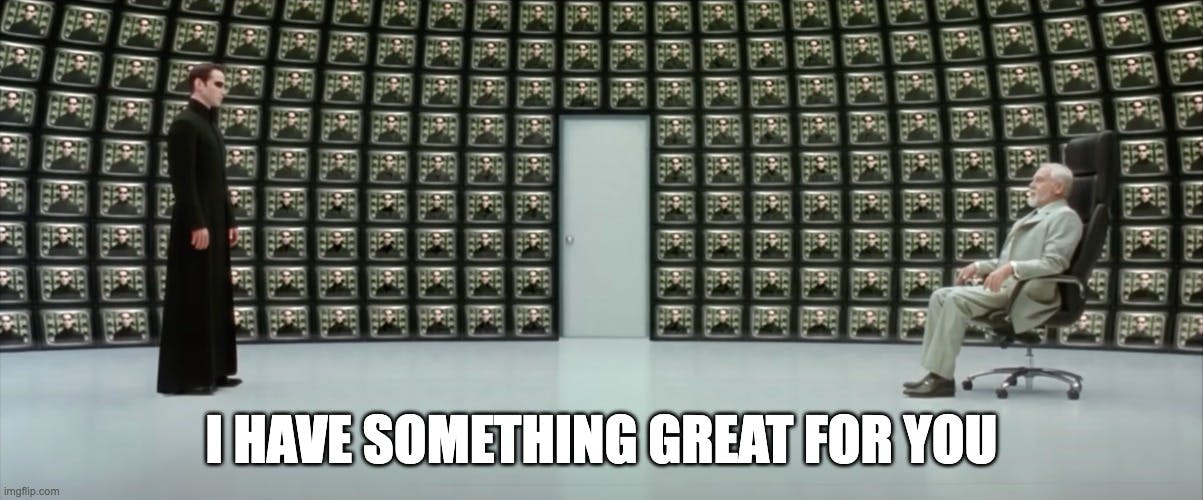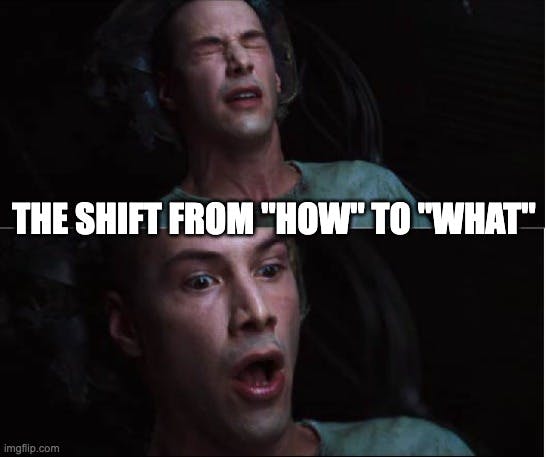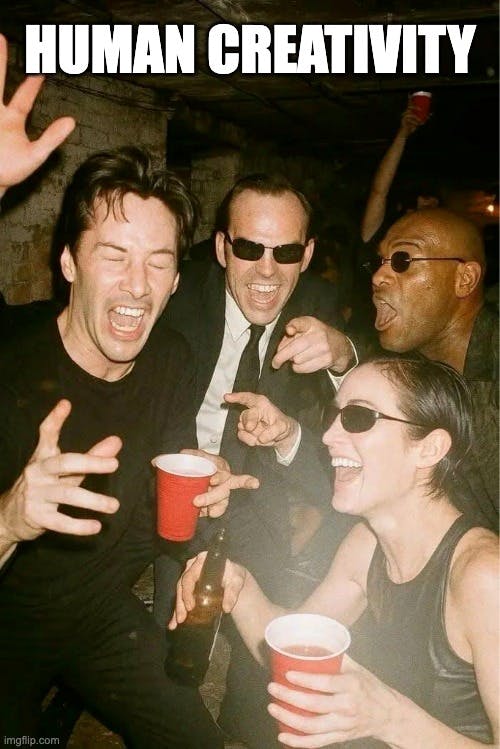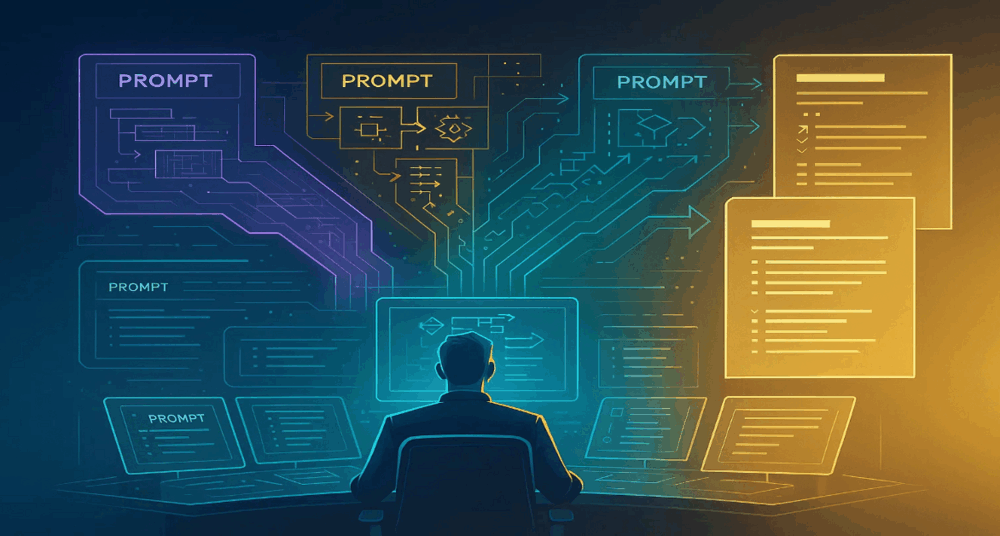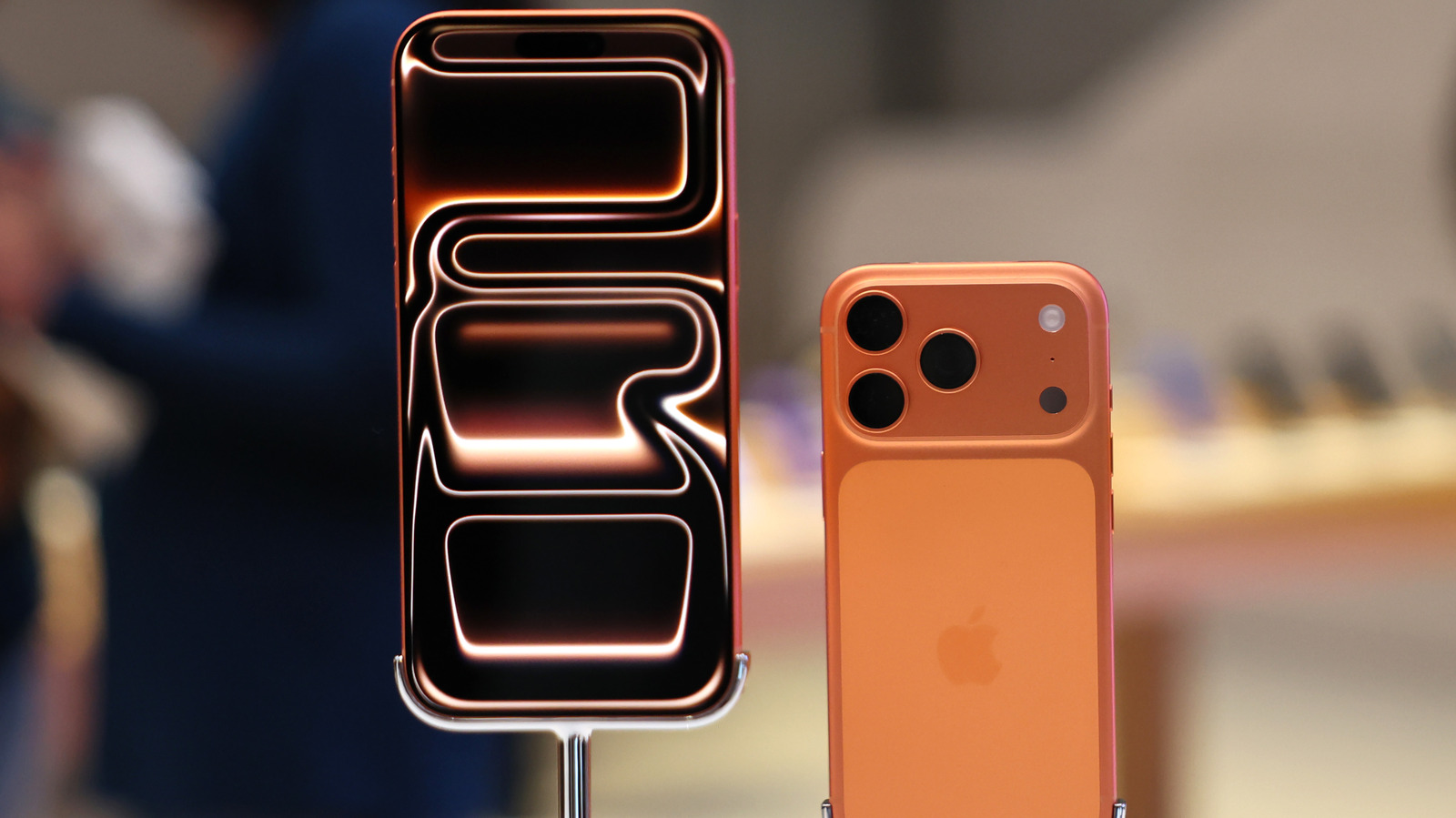Try to imagine a completely new color – one that isn’t just a mix of the colors we already know. Or think of a love story that no one has ever sung about or written a poem about yet. Or picture a form of life that sci-fi writers haven’t dreamed up already. Or what it would be like to experience our four-dimensional world if you were some other being who came here from their forty-dimensional world.
Our imagination is the ability to remix what we already know and emphasize the elements that matter most for the time we live in, the context in which we act, or the problem we face.
Up until recently, we liked to think we were unique in this ability. But in reality, we were just captivated by joyfully exercising the features of our imagination:
- simulate anything in our mind based on a configuration or a scenario — even (and especially) when it’s incomplete
- travel forward (approximation) or backward (retrodiction) within a thing, filling in the details however we like
- play around with abstract things, like names, symbols, concepts and norms, to explore their relations with each other and with other things
- step outside our perspective, putting ourselves in the place of other living beings
- decide what to highlight and what to fade, mixing in details we’ve gleaned from different sources
The stronger a creative person’s skills, the richer their experience, and the more accustomed they are to change, the more complex and diverse sparks of inspiration they get, and that means their findings become more nuanced and precise as well.
But turns out AI is pretty good at remixing stuff too.
An enormous amount of human work is built into it. And on top of that, it can quickly switch between different modalities – writing stories and poems, debating and making arguments, drawing and composing music, writing code, and so on.
The quality of a particular run might not be top-notch (yet), but it can try again and again each time in a minute or less. And that’s before all those trillions invested in it have even fully paid off yet.
All of our discoveries, moments of artistic expression, and the result of pursuing our passion will end up as input in the training data of the next model.
So, should we just give up and go home? Well… not so fast!
Profound discoveries arise from unexpected side problems
AI does not have agency.
Innovation needs someone with an idea to fight the status quo. The art needs to relate to something, and an observer who experiences the work. Just making drafts of something that hasn’t been done yet isn’t enough.
Think of AI as one more feature in our extended imagination that helps us run experiments faster and cheaper.
Many great things haven’t been done before because they seem silly, useless, or impossible.
Have you ever wondered how modern astronomy came to be?
Way before today’s space security centers and asteroid monitoring systems, before private space programs and interplanetary missions, before the Moon landing, the launch of the first satellites, and the rise of astrophysics – even before the invention of the telescope. Long before the age of great geographical discoveries and celestial navigation, before astrology took shape in the ancient civilizations of Mesopotamia and Egypt, before the first calendars and systems of tracking time were created, and even before the earliest cosmogonic myths about the creation of the world.
A long, long time ago, we had this very distant ancestor who, instead of doing the usual things people did back then, would spend hours just staring up at the sky.
Over time, he probably started to notice patterns: some stars stayed put and formed shapes (constellations), while others, like planets, wandered around in predictable ways. The Moon would wax and wane on a regular schedule. The Sun rose higher or lower depending on the time of year. It must have taken a while to connect these patterns in the sky with events happening on Earth, and it was most likely done by others who continued that job.
But why did they even bother? They had tons of other ‘urgent’ stuff going on that required their attention.
Still, it was strange, and it got them curious.
Over time, this proved to be one of the most powerful tools for survival. Understanding the stars and their movements became crucial for predicting seasonal changes, tracking animal migrations, farming, and navigation. It also gave rise to myths and legends that helped shape culture.
Same as thousands of people had seen apples fall from trees. Still, only Newton saw a universal principle in it, connecting the falling apple with the motion of the Moon. He was able to systematize and generalize his idea into a mathematical theory, building on the knowledge of those who came before him, such as Galileo Galilei, Johannes Kepler, and Descartes, among others.
Or John Stewart Bell, who actually tried to disprove quantum theory but ended up providing its ultimate confirmation.
The game is the same, it’s just much noisier in the room
Pursuing significantly different perspectives, exploring ways others ignore, or working beyond norms can reveal distinctly new ideas. Asking increasingly better questions is the way to go.
It requires some effort to do so, and without genuine curiosity, it won’t be easy to stick to it for long enough. You also need to be capable of making a connection between item 1 and item 2, which usually requires a solid background in a particular field.
Being genuinely curious will also help you take risks and make choices, even if they aren’t optimal in the moment.
But there is also something about the orientation of questions you want to focus on: usually the ones that cultivate, and not criticize. Criticizing questions tend to focus on deficits, while cultivating questions foster exploration and connection.
It does not mean we ignore problems. We reframe them as opportunities for deeper understanding and finding creative solutions:
- Why didn’t it do the job? (criticizing) vs. How does this connect to what we already know? (cultivating)
- What needs to be fixed? (criticizing) vs. What other angles could we consider? (cultivating)
- What’s wrong with this approach? (criticizing) vs. What if we pushed this idea further? (cultivating)
The quality of us as question-askers will define how much AI boosts our productivity
I believe it is important to consider how the unit of digital information has evolved.
With AI, something big has changed in the way we work with information.
It is no longer just information, which you can analyze and draw your own conclusions. It talks back to you and adapts according to both your explicit and implicit preferences. You don’t own or control it, nor do you have any idea how or by whom it was made, or what agenda they had.
Its train of thought, or the sources used, can be traced to some extent, but are rarely available by default. You can’t rely on it, as responses to the same request might vary over time.
Previously, the information remained the same for everyone who accessed it, though the final use of it could vary significantly. Now, the quality of both the information itself and the interpretation is up to the users.
It is safe to say that we should question our skills and the way we work with information.
The prior multimedia period has had a deep impact, with significant side effects that remain to be fully understood.
If the medium is the message, then the multimedia period was all about owning attention. People who could sit through more than an hour of educational content benefited much more than those who could only handle quick, fragmented content that lasted under 60 seconds and changed frequently.
The AI period, then, is all about stretching human agency.
The way you shape the collaboration with AI and the occasions when you decide to engage with it will make a substantial difference.
Even though research on the impact of AI on human cognition and autonomy is still in its early stages, recent studies show concerning signs:
- a clear link between using GenAI tools a lot and having weaker critical thinking skills, and younger people tended to depend on AI tools more and score lower (research paper)
- relying on GenAI tools replaces the effortful cognitive processes needed for independent thinking through cognitive offloading, which might make us easier to manipulate and might stifle creativity and critical thinking (research papers: one and two)
- collaboration with GenAI enhanced immediate task performance, but that effect did not persist in subsequent tasks and was accompanied by significant decreases in intrinsic motivation and increases in feelings of boredom after transitioning back to solo work (research paper)
Afterword
Can AI, as humans do, create something new out of the unknown? Will AI mess with our taste, make our creative work less diverse and rich, or make us less autonomous? We’ll see.
What we know, for sure, is that people have always been most interested in other people.
Creativity is a relational process that is done through participation in a distributed system of meaning-making.
We relate to each other’s work, reflect on those experiences, and foster relationships with one another. This fuels human creativity like nothing else.
And until human nature is the same, we will always find new ways to spark each other (for good and for bad).
Thanks for your attention! 👋
P.S. If you enjoyed this post, please consider connecting with me on X.

